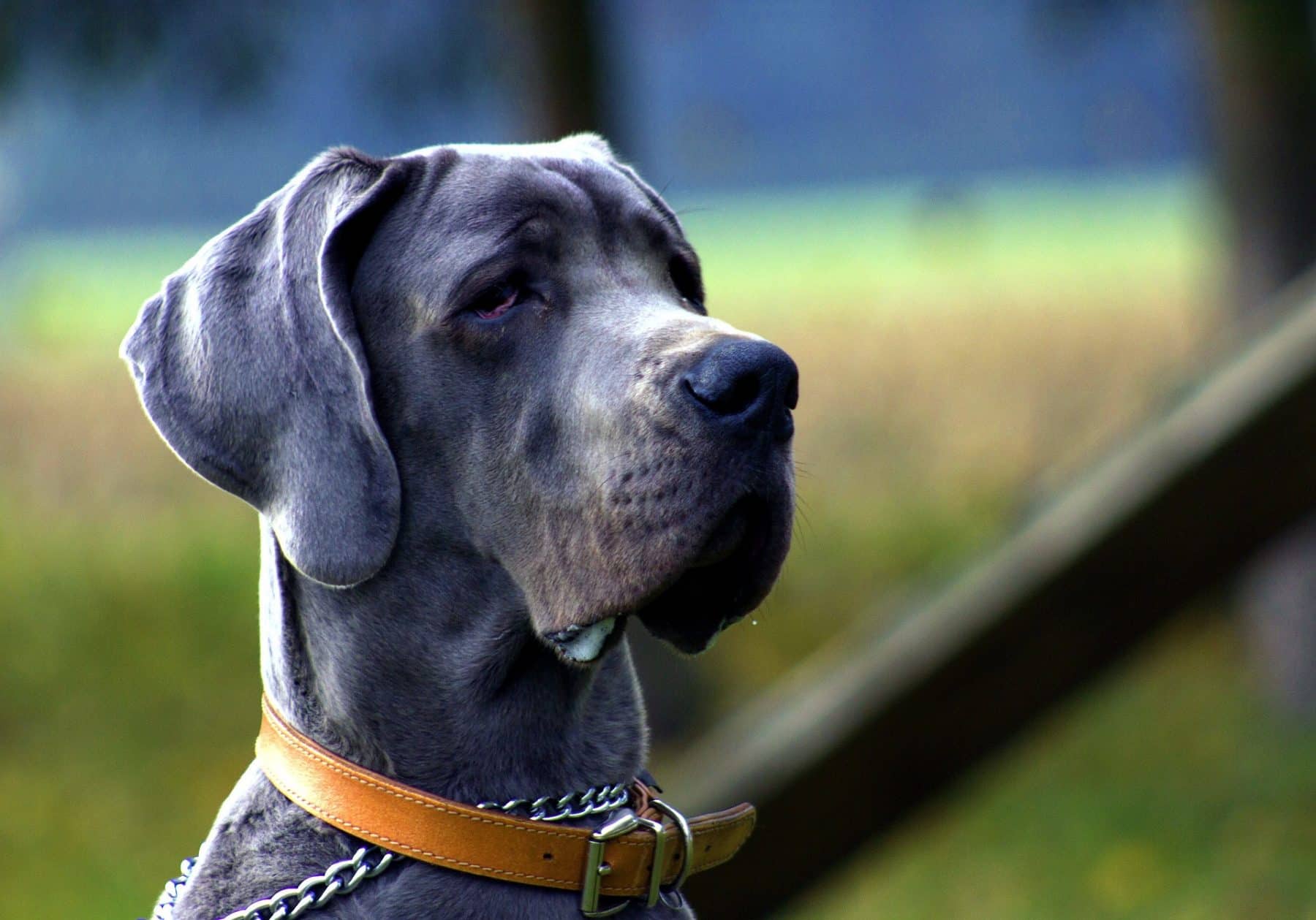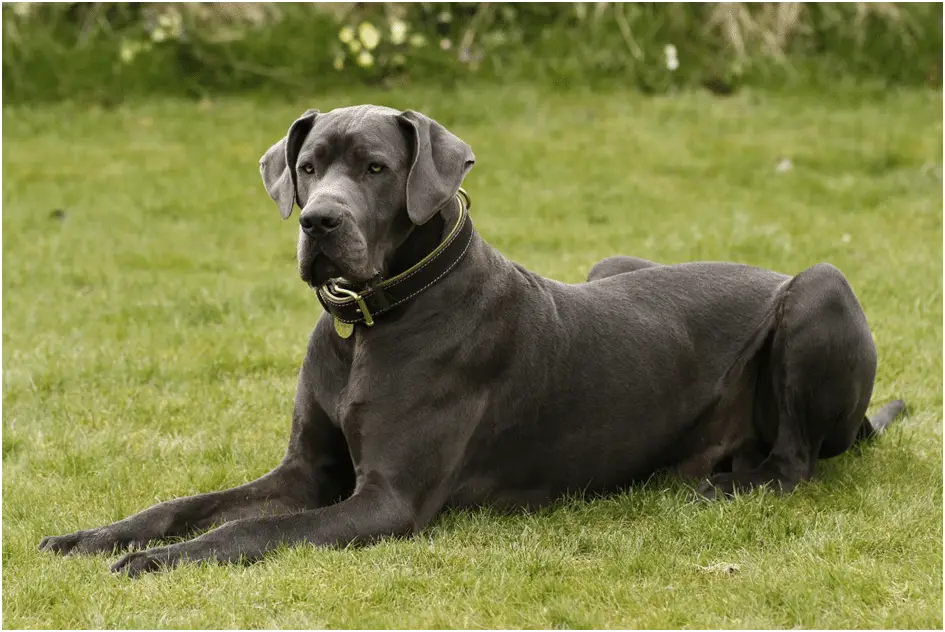Great Danes are a popular breed of dogs known for their large size and gentle nature. Many people wonder if Great Danes can be trained as service dogs to assist individuals with disabilities. The answer is yes, Great Danes can be trained as service dogs and are well-suited for certain types of service work.

One of the main reasons Great Danes make good service dogs is their size. Their large stature and strength make them capable of providing physical support and assistance to individuals with mobility issues. Additionally, Great Danes have a calm and gentle nature, which is essential for service dogs that work with people who have emotional or psychological disabilities.
However, not all Great Danes are suitable for service work. Just like any other breed, Great Danes must undergo rigorous training and evaluation to determine whether they have the temperament, intelligence, and skills necessary to perform as service dogs. It is important to work with a reputable trainer or organization that specializes in training service dogs to ensure that the dog is properly trained and matched with the right individual.

Great Danes as Service Dogs
Great Danes are large, powerful dogs that can be trained to perform a variety of service work. Their size and strength make them a good choice for people who need assistance with mobility, such as those who use wheelchairs or have difficulty walking. Great Danes can also be trained to provide emotional support, alert their owners to medical emergencies, and perform other tasks that help people with disabilities live more independently.
To become a service dog, a Great Dane must undergo extensive training to learn how to perform specific tasks and behave appropriately in a variety of situations. This training can take up to two years and must be conducted by a qualified trainer who has experience working with service dogs. During this time, the dog will learn how to behave in public, respond to commands, and perform tasks such as opening doors, retrieving objects, and providing balance support.
One of the advantages of using a Great Dane as a service dog is their size. Great Danes are one of the largest dog breeds and can weigh up to 150 pounds. This makes them strong enough to provide support to people with mobility issues, and their size can also be a deterrent to potential attackers. However, their size can also be a disadvantage in some situations, such as when traveling on public transportation or in small spaces.
Great Danes are also known for their gentle, affectionate nature, which makes them well-suited for service work. They are intelligent and eager to please, which makes them easy to train. However, like all dogs, Great Danes require proper socialization and training to ensure that they behave appropriately in public. They also require regular exercise and mental stimulation to keep them healthy and happy.
In conclusion, Great Danes can make excellent service dogs for people with disabilities. They are strong, intelligent, and well-suited for a variety of tasks. However, it is important to remember that not all Great Danes are suitable for service work, and that extensive training is required to ensure that the dog behaves appropriately in public.
Training and Tasks
Great Danes can make excellent service dogs, but they require specialized training to perform specific tasks. Service dogs must meet strict criteria to obtain service dog registration. The training process for Great Danes is similar to other breeds, but some tasks may require specialized training.

Basic Obedience
Before a Great Dane can become a service dog, they must undergo basic obedience training. This training includes commands such as sit, stay, come, and heel. Basic obedience training is essential for all service dogs because it provides a foundation for more advanced training.
Specialized Tasks
Great Danes can be trained for a variety of tasks, depending on the needs of their handler. Some common tasks include:
- Mobility Assistance: Great Danes can help their handlers with mobility issues by providing balance and support while walking or standing. They can also retrieve items and open doors.
- Alerting: Great Danes can be trained to alert their handlers to various sounds, such as doorbells, alarms, or approaching people.
- Medical Assistance: Great Danes can be trained to detect changes in their handler's blood sugar levels, alerting them to potential medical emergencies.
- Psychiatric Assistance: Great Danes can provide emotional support and comfort to their handlers, helping them manage anxiety and depression.
Trainability
Great Danes are intelligent and eager to please, making them trainable for a variety of tasks. However, they can be stubborn at times, so it is essential to have a skilled trainer who can provide consistent and patient training.
Trainer
It is crucial to find a qualified trainer who has experience working with Great Danes and service dogs. A trainer can help assess the dog's temperament and abilities and develop a training plan tailored to the handler's needs. It is also important to find a trainer who uses positive reinforcement training methods, as this has been shown to be the most effective and humane way to train service dogs.
Physical and Temperament Traits
Great Danes are known for their large size, short coat, and physical characteristics that make them stand out from other breeds. In addition to their physical traits, Great Danes have a unique temperament that makes them well-suited for service work. This section will explore the size and build of Great Danes, as well as their personality and temperament.
Size and Build
Great Danes are one of the largest dog breeds, with males typically standing between 30 and 34 inches tall at the shoulder and weighing between 120 and 200 pounds. Females are slightly smaller, standing between 28 and 32 inches tall and weighing between 100 and 130 pounds. Their large size and muscular build make them well-suited for tasks that require physical strength, such as mobility assistance.
Personality and Temperament
Great Danes are known for their gentle and friendly personalities. They are typically calm and patient, which makes them well-suited for tasks that require a steady temperament, such as guiding or alerting their handler. Great Danes are also highly trainable, which makes them ideal candidates for service work.
However, it is important to note that Great Danes, like all dogs, have their own unique personalities and temperaments. Some Great Danes may be more reserved or independent than others, which may impact their suitability for certain tasks. It is important to work with a qualified trainer to determine whether a Great Dane is a good fit for a specific service role.
Overall, Great Danes have a combination of physical and temperament traits that make them well-suited for service work. Their large size and calm temperament make them ideal candidates for tasks that require physical strength and a steady demeanor. With proper training and socialization, Great Danes can make excellent service dogs.
Health and Exercise Needs
Great Danes are a large breed of dog that require a significant amount of exercise to maintain their health and well-being. They have a high energy level and require daily exercise, such as long walks or runs, to prevent them from becoming overweight or developing behavioral problems.

In addition to exercise, Great Danes also have specific health needs that should be addressed. Like all large breeds, they are prone to certain health risks, such as hip dysplasia and bloat. Regular check-ups with a veterinarian and a balanced diet can help prevent these health issues.
It is also important to note that Great Danes have a shorter lifespan compared to smaller breeds, with an average lifespan of 6-8 years. This is due to their size and the strain it puts on their body.
Overall, Great Danes can make excellent service dogs, but it is important to understand their specific health and exercise needs. Providing them with proper care and attention can ensure that they are able to perform their duties effectively and live a happy, healthy life.
Legal Aspects and Rights
Under the Americans with Disabilities Act (ADA), service animals are defined as dogs that are individually trained to do work or perform tasks for people with disabilities. The ADA does not restrict service animals by breed, size, or type. Therefore, Great Danes can be considered as service dogs if they meet the ADA's definition and requirements.
Service dogs are allowed to accompany their owners in all areas where the public is allowed to go, including restaurants, hotels, and stores. They are also allowed to fly with their owners in the cabin of an airplane without being charged an additional fee. However, it is important to note that some airlines may require documentation or advanced notice before allowing a service dog on board.
It is important for service dog owners to understand their rights and responsibilities when it comes to their service animal. For example, a service dog owner is responsible for the care and supervision of their dog at all times, and the dog must be under control and well-behaved in public. If a service dog is disruptive or aggressive, the owner may be asked to remove the dog from the premises.
It is also important to note that emotional support animals (ESAs) are not considered service animals under the ADA. ESAs do not have the same legal protections as service dogs, and they are not allowed in all public areas. However, some states have laws that provide additional protections for ESAs.
In conclusion, Great Danes can be trained to be service dogs and are not restricted by the ADA based on their breed or size. Service dog owners should be aware of their rights and responsibilities under the ADA, and understand that emotional support animals are not considered service animals under the law.

Comparison with Other Breeds
Great Danes are not the only breed used for service work. There are many other breeds that are also trained as service dogs. Some of the most popular breeds for service work include Labrador Retrievers, German Shepherd Dogs, and Golden Retrievers.
Labrador Retrievers are one of the most popular breeds for service work. They are known for their intelligence, loyalty, and friendly nature. They are often used as guide dogs for the blind, as well as for other types of service work.
German Shepherd Dogs are also a popular choice for service work. They are known for their intelligence, loyalty, and protective nature. They are often used as police dogs, as well as for other types of service work.
Golden Retrievers are another popular breed for service work. They are known for their friendly nature, intelligence, and trainability. They are often used as therapy dogs, as well as for other types of service work.
Poodles are also used for service work. They are known for their intelligence, trainability, and hypoallergenic coat. They are often used as guide dogs for the blind, as well as for other types of service work.
Collies are also used for service work. They are known for their intelligence, loyalty, and gentle nature. They are often used as therapy dogs, as well as for other types of service work.
While Great Danes are not as commonly used for service work as some of these other breeds, they do have a number of advantages. Their large size offers stability and support for those with mobility challenges. They are also known for their intelligence and trainability, making them well-suited for service work.
Conclusion
In conclusion, Great Danes can be excellent service dogs for individuals with disabilities that limit their mobility. Their size and strength make them suitable for taller handlers, and they possess a gentle and calm nature that can provide invaluable assistance to those with physical disabilities, visual impairments, mental health needs, and emotional support requirements.
However, training Great Danes as service dogs is a rigorous and multi-faceted process that requires socialization, obedience training, task-specific training, and certification. Potential handlers should also consider the potential challenges associated with the breed, such as their size and potential health issues.
Overall, Great Danes as service dogs can have a significant impact on the quality of life for individuals with disabilities, and real-life success stories are a testament to their incredible abilities.